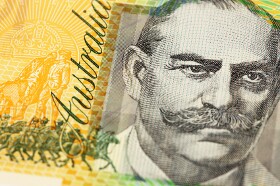
The Australian dollar traded lower for the most part today as traders’ optimism was evaporating. The relatively positive Chinese macroeconomic data was unable to provide the Aussie a boost. Economic indicators in Australia itself were mixed.
The Australian Bureau of Statistics reported that import prices fell in the March quarter by 1.0% instead of rising at the same rate as analysts had predicted. Year-on-year, though, the prices increased by 0.9%. The main contributors to the quarterly decline were petroleum, petroleum products and related materials; inorganic chemical; road vehicles (including air-cushion vehicles). On the other hand, gains were registered in gold, non-monetary (excluding gold ores and concentrates) as well as telecommunications and sound recording and reproducing apparatus and equipment. Export prices rose by 2.7% on a quarterly basis and by 2.3% on an annual basis. The biggest contributors to the rise were gold, non-monetary (excluding gold ores and concentrates); metalliferous ores and metal scrap; gas, natural and manufactured; meat and meat preparations. Meanwhile, the biggest declines occurred in petroleum, petroleum products and related materials as well as non-ferrous metals.
The Reserve Bank of Australia reported that private sector credit rose by 1.1% in March, accelerating from 0.4% in February. Analysts were expecting a slowdown to 0.3%.
AUD/USD fell from 0.6555 to 0.6541 as of 10:16 GMT today. EUR/AUD rose from 1.6574 to 1.6621. AUD/JPY was about flat at 69.75.
If you have any questions, comments, or opinions regarding the Australian Dollar, feel free to post them using the commentary form below.